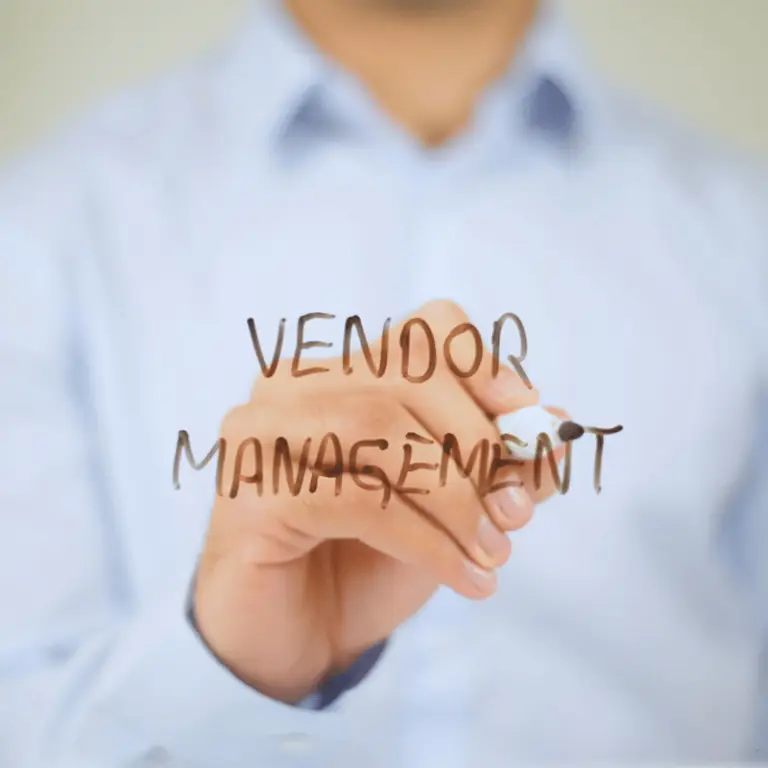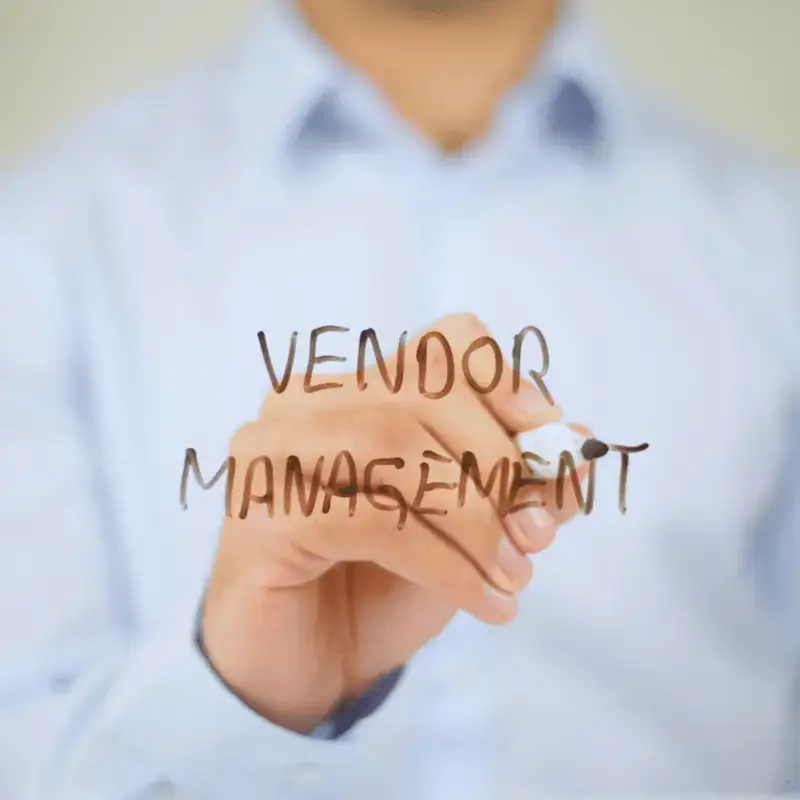- techjacksolutions.com
- Mon - Friday: 8.00 am - 6.00 pm
We are creative, ambitious and ready for challenges! Hire Us
We are creative, ambitious and ready for challenges! Hire Us
Over 10 years we help companies reach their financial and branding goals. Engitech is a values-driven technology agency dedicated.
411 University St, Seattle, USA
+1 -800-456-478-23

Our Vendor Risk Management (VRM) service helps organizations identify, assess, and remediate security risks introduced by external service providers, suppliers, or other third parties. This offering supports two distinct scopes:
Ongoing Vendor Risk Management: Continuous oversight, vendor onboarding, and performance monitoring.
One-Time Assessment: A targeted, point-in-time evaluation of vendor risk posture, culminating in actionable remediation steps.
Objectives:
Create consistent vendor onboarding and screening.
Align vendor due diligence with recognized industry standards.
Produce transparent risk assessments and reporting.
Mitigate security exposures and maintain compliance with frameworks.
Enhance governance across the entire vendor lifecycle.
Throughout the phases below, clients receive:
Vendor Due Diligence Questionnaires & Checklists
Risk Assessment Scorecards & Gap Analysis
Contractual / SLA Guidance
Remediation & Governance Roadmaps
Ongoing Monitoring Reports (if ongoing engagement)
Activities:
Vendor Inventory & Segmentation: Build or refine a comprehensive list of active vendors, categorize by criticality and data sensitivity.
Framework Applicability Review: Identify which standards (ISO 27001, HIPAA, PCI-DSS, etc.) are relevant to each vendor.
Deliverables:
A Vendor Inventory document or register, highlighting risk tiers (High, Medium, Low)
Defined Scoping Report clarifying which controls or frameworks to apply
Value: Ensures clarity on how many vendors you have, their respective risk levels, and the compliance environment they must adhere to.
Activities:
Questionnaire & Evidence Collection: Using standard questionnaires (aligned with NIST, SOC 2, PCI) to gather vendor security details.
Risk Scoring & Gap Identification: Score vendor posture, highlight deficiencies or red flags (e.g., missing encryption, no MFA).
Deliverables:
Risk Assessment Scorecards for each vendor or vendor type
Gap Analysis table mapping shortfalls against the chosen frameworks
Value: Provides an objective measure of vendor security maturity, enabling leadership to prioritize remediation for the most critical shortfalls.
Activities:
Contract / SLA Review: Propose or revise key clauses (breach notification, data handling, right-to-audit, HIPAA BAA for healthcare, etc.)
Remediation Action Plans: Develop targeted steps for vendor improvements, e.g., policy updates, tech controls, or training.
Deliverables:
Contractual Guidance Packet: Clause recommendations, data protection addenda
Remediation Roadmap: List of actions for each vendor or vendor category, plus timeline
Value: Reduces liability exposure and solidifies vendor agreements. Ensures the highest-risk issues are tackled promptly, while clarifying responsibilities for both client and vendor.
Activities:
Policy & Process Integration: Embed VRM processes into existing procurement workflows.
Ongoing Vendor Performance Tracking: Periodic reviews of vendor status and updated risk scores.
Deliverables:
Monitoring Dashboard / Reports: Summaries of vendor compliance, new or emerging risks
Implementation Checkpoints: Confirmation that contract changes or recommended controls were put into practice
Value: Proactively detects deviations in vendor performance, enabling timely action. Establishes a continuous cycle of vendor oversight.
Activities:
Final Consolidated Reporting: Provide a comprehensive VRM overview—progress, outstanding issues, successes.
Lessons Learned & Future Maturity Steps: Suggest enhancements for the next iteration of VRM or expansions (e.g., FedRAMP for cloud providers, advanced threat intel integration).
Deliverables:
VRM Program Summary Report: Compilation of all phases, results, and recommended next steps
Long-Term Governance Strategy: A flexible plan to evolve with new regulations or business changes
Value: Ensures a lasting framework for vendor oversight. Clients gain both short-term fixes and a path to deeper maturity over time.
Stronger Regulatory Compliance & Reduced Liabilities
Enhanced Vendor Relationships & Trust
Improved Operational Efficiency & Resource Focus
Business Reputation & Customer Confidence
Resilience & Long-Term Scalability
Targeted Cost Savings & Prioritization
Strategic Advantage & Competitive Differentiator
Service Tier | Scope & Deliverables | Ideal Use Case & Client Value | Pricing |
1. Individual Vendor Basic Assessment | – Scope: Evaluate security posture for a single vendor (or very few). Deliverables • Rapid Phase 1–2 approach (Scoping & Classification, Basic Risk Assessment)• Light contractual guidance but no long-term monitoring. | – Ideal Use: SMBs that need a quick snapshot of a new or critical vendor before signing major contracts or handling sensitive data.- Client Value: Pinpoints urgent security gaps or compliance issues, minimizing immediate risk exposure. | $2,500–$4,000 (one-time) |
2. Individual Advanced Assessment | – Scope: Deeper assessment for one high-impact vendor.- Deliverables:• Full coverage of Phases 1–3 (Scoping, Risk Analysis, Contractual Remediation Plan)• Short follow-up into Phase 4 for minimal monitoring or checkups. | – Ideal Use: SMBs with mission-critical vendors (e.g., handling PHI or payment data) requiring thorough review + partial remediation oversight.- Client Value: Offers advanced due diligence, bridging contractual fixes + vendor improvement steps. | $5,000–$8,000 (one-time) |
3. Comprehensive Vendor Management Program | – Scope: All five phases for multiple vendors, including repeated cycles of risk assessment (Phases 2–4) quarterly or semiannually.- Deliverables:• End-to-end VRM (onboarding, risk scoring, contract updates, monitoring dashboards, final reporting). | – Ideal Use: SMBs wanting long-term oversight for 10+ third parties or stricter compliance demands (HIPAA, PCI, etc.) –Client Value: Maintains continuous vendor risk visibility; quickly responds to posture changes; fosters more mature third-party security governance. | $10,000–$18,000/yr (ongoing) |
This structured approach enables Tech Jacks Solutions to provide precisely tailored vendor risk management services aligned with your business requirements, ensuring immediate actionable insights with future scalability through planned enhancements.
| Control Category | ISO 27001 | NIST SP 800-53 | CIS Controls | HIPAA Security Rule | SOC 2 | PCI-DSS |
|---|---|---|---|---|---|---|
| Vendor Risk Assessment | A.15.1.2 | RA-3, RA-5 | CIS 4, 15 | 164.308(a)(1)(ii)(A) | CC9.2 | 12.8 |
| Vendor Security Controls Evaluation | A.15.2.1 | SA-9 | CIS 15 | 164.314(a)(1) | CC9.2 | 12.8 |
| Compliance & Contractual Controls | A.15.1.1, A.15.2.1 | SA-4, SA-9 | CIS 4, 15 | 164.314(a) | CC2.3 | 12.8.2 |
| Incident Response Readiness | A.16.1.7 | IR-4 | CIS 17 | 164.308(a)(6) | CC7.4 | 12.10 |
| Security Controls Effectiveness | A.14.2.9, A.12.6.1 | CA-2, CA-7 | CIS 6, 16 | 164.306(e) | CC4.1 | 6.2 |
| Information Security Policy | A.5.1.1, A.18.2.2 | PL-1, PL-2 | CIS 17 | 164.316(a) | CC5.3 | 12.1 |
| Incident Response Preparedness | A.16.1.1, A.16.1.5 | IR-8 | CIS 17 | 164.308(a)(6)(ii) | CC7.4 | 12.10 |

Interested in learning more about our solution? Please visit the Solutions Page.